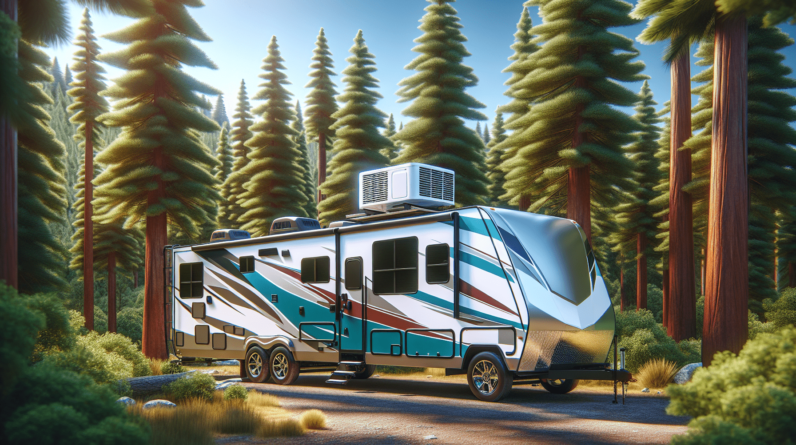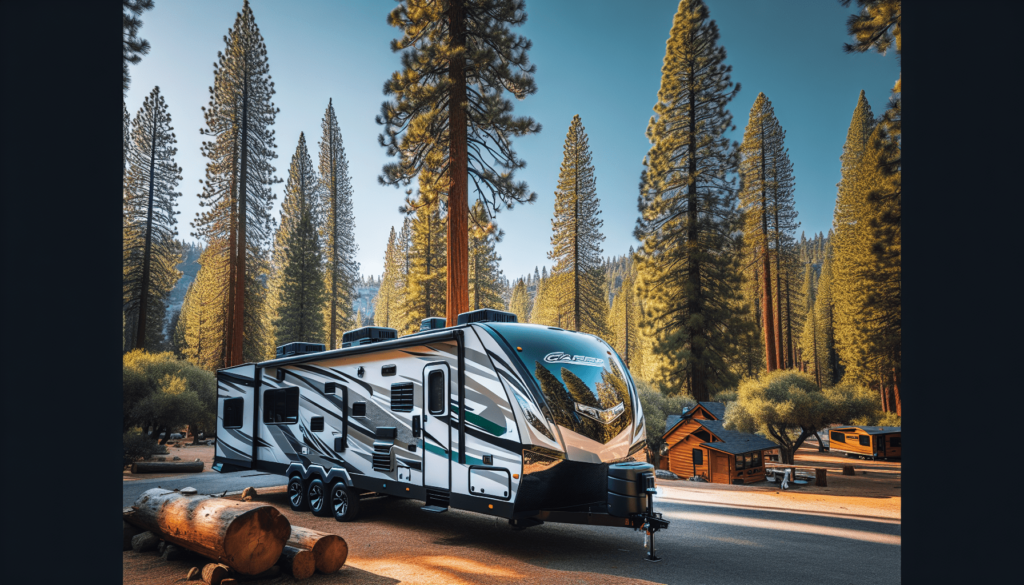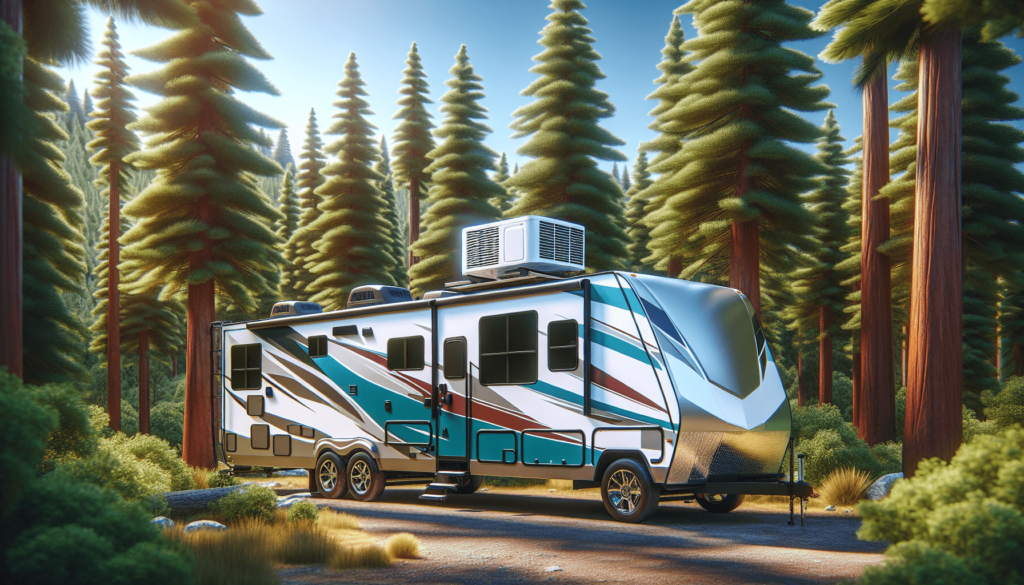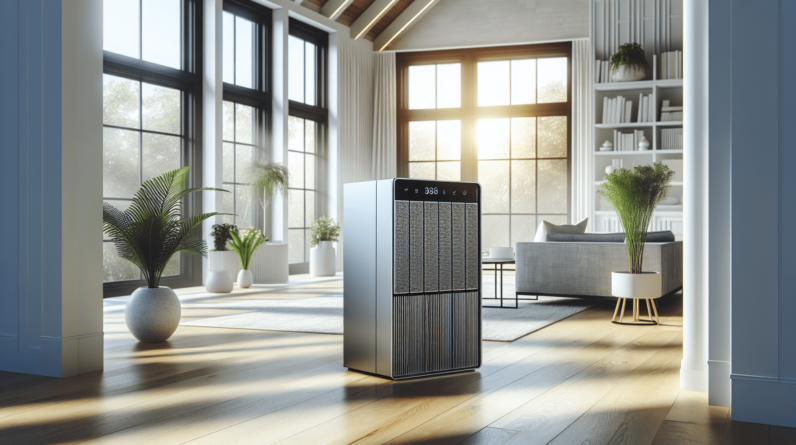

Have you ever felt the discomfort of sweltering heat while traveling in your RV? Keeping cool is essential during those hot summer days, especially when you’re on the road or parked at a campsite. That’s where an RV trailer air conditioner comes into play. Let’s dive into the essentials of choosing and maintaining your air conditioning system for your RV to ensure that your travels remain comfortable.

Understanding RV Trailer Air Conditioners
When you think of RVs, the iconic image often includes kitchens, sleeping areas, and of course, a cooling system. An RV trailer air conditioner is designed to keep your living space cool and comfortable regardless of the weather outside. This includes understanding how they work and the different types available.
How Does an RV Air Conditioner Work?
An RV air conditioner generally works by using a refrigerant to cool the air inside your RV. The system pulls hot air in from the inside, cools it, and circulates it back into the RV. This is done using a few key components, which include:
- Compressor: This compresses the refrigerant and circulates it through the system.
- Evaporator Coil: This is where the refrigerant expands and cools down, allowing the air to flow over it, resulting in cooled air.
- Condenser Coil: This component dissipates heat extracted from the air.
By cycling the warm air from inside your RV and replacing it with cool air, the system helps maintain a comfortable temperature, allowing you to fully enjoy your adventures.
Types of RV Air Conditioners
Understanding the different types of RV air conditioners can greatly enhance your experience. Here are the most popular options you might consider:
| Type | Description |
|---|---|
| Roof-Mounted Units | These are built to sit on the roof of your RV. They are generally more powerful and quieter, making them a popular choice for larger RVs. |
| Portable Air Conditioners | These units can be moved around within the RV. They are ideal for smaller spaces and can help supplement a built-in system. However, they may require a greater power draw. |
| Mini-Split Systems | A modern option that includes an outdoor unit and indoor units. They offer high efficiency and quiet operation but can be more expensive to install. |
| Window Air Conditioners | These are less common in RVs but can be an option if you have a designated window space and require less cooling capacity. |
Choosing the Right RV Air Conditioner
Selecting the right air conditioner for your RV involves considering several factors, including your cooling needs, power options, and budget.
Consider Your RV Size
The size of your RV directly correlates with the type of air conditioner that you will need. Larger RVs require more cooling power, which usually means a heavier-duty unit is necessary. Here’s a rough estimation of BTU (British Thermal Unit) ratings you might need based on the size of your RV:
| RV Size (Feet) | Recommended BTU |
|---|---|
| 10 – 20 | 5,000 – 7,000 BTU |
| 20 – 30 | 7,000 – 13,000 BTU |
| 30 – 40 | 13,000 – 15,000 BTU |
| Over 40 | 15,000+ BTU |
Make sure to assess your usage and pick a unit that suits your lifestyle comfortably.
Energy Source Considerations
Most RV air conditioners run on electricity. However, you may have options depending on your electrical setup:
- Fully Electric Units: These are typically easy to install and use. However, they need a good power supply.
- Dual Fuel Units: Some models allow you to switch between electric and propane, giving you flexibility based on your surrounding facilities.
Budget and Cost Efficiency
When it comes to air conditioners, be sure not to compromise on quality. Investing in a reliable unit could save you a fortune on repairs and energy costs. Prices can vary significantly, so always check for features that justify a higher price tag, including efficiency ratings.
Installation of Your RV Trailer Air Conditioner
Once you’ve chosen your air conditioner, the installation process can be straightforward—but more challenging for some. Let’s look at how you might handle it depending on the type of air conditioner you’ve selected.
Roof-Mounted Units
- Gather Materials: Ensure you have all necessary tools and materials, including ladders or scaffolding, sealants, and brackets.
- Location Selection: Choose a location on the roof that is away from obstructions.
- Cut a Hole: Mark and cut a hole for the air conditioner, ensuring you have proper waterproofing.
- Install the Unit: Follow the manufacturer’s instructions carefully to mount the unit securely.
- Seal and Test: Apply sealant around the edges to prevent leaks, and test the unit once installed.
Portable Air Conditioners
These units require minimal setup:
- Placement: Identify a suitable location with a nearby power source.
- Ventilation: Ensure there’s a way to vent hot air outside, often using sliding windows or openings.
- Power Connection: Plug in the unit and turn it on, adjusting settings as necessary.
Mini-Split Systems
These systems may require professional installation due to their complexity. However, here’s a general idea of the steps involved:
- Install the Indoor Unit: Mount it on a wall with access to a power supply and proper drainage.
- Install the Outdoor Unit: This often involves connecting it with refrigerant lines and ensuring ventilation.
- Connect Power: Work with an electrician if required to ensure the unit is safely connected to your RV’s power system.
Maintaining Your RV Trailer Air Conditioner
Maintaining your air conditioning system is critical for longevity and performance. Regular upkeep can ensure your unit runs efficiently, keeping you cool when you need it most.
Cleaning the Filter
Dirty filters can significantly reduce airflow, making your unit work harder. Here’s how to clean or replace yours:
- Locate the Filter: Typically found in the indoor unit of roof-mounted air conditioners.
- Remove and Clean: Depending on the type, either wash with soap and water or replace it.
- Reinstall: Ensure the filter is dry and placed correctly before operating the unit.
Checking Refrigerant Levels
Low refrigerant levels can hinder cooling performance. Here are signs that you may need to check your refrigerant:
- The air is warm or not cooling effectively.
- Ice formation on the evaporator coils.
- Unusual noises from the unit.
Consider hiring a professional to gauge refrigerant levels, as handling refrigerant can be hazardous and often requires certification.
Inspecting and Sealing Ducts
For roof-mounted units, inspect ducts and vents for any signs of leaks or blockages. Here’s what you should do:

- Visual Inspection: Look for holes, cracks, or gaps.
- Seal: Use duct tape or specific sealants to repair any issue.
- Clean Ducts: Occasionally cleaning your ducts can also enhance airflow.
Annual Professional Service
Just like your regular vehicle maintenance, an annual check-up for your air conditioner can catch problems before they escalate. During this service, a technician will:
- Clean internal components.
- Check electrical connections.
- Test overall performance.
Troubleshooting Common Problems
If your RV air conditioner isn’t performing as it should, don’t panic. Many issues can be resolved with a little bit of troubleshooting.
It Won’t Turn On
If your unit doesn’t power on, check:
- Power Source: Ensure it’s plugged in or the generator is functional.
- Thermostat Settings: Double-check that it’s set to a cooler temperature.
- Circuit Breaker: A tripped breaker can prevent it from turning on.
It’s Not Cooling
If your air conditioner runs but isn’t cooling effectively, consider:
- Dirty Filter: Clean or replace the filter.
- Blocked Vents: Make sure the vents are unobstructed by furniture or debris.
- Refrigerant Levels: Get professional assistance to check levels.
Strange Noises
Unusual sounds can indicate mechanical issues. Look into:
- Loose Parts: Check externally for any loose screws or fittings.
- Open Ducts: Make sure ducts are not rattling.
- Professional Help: If noises persist, contacting a service technician is advisable.

The Benefits of Having an RV Air Conditioner
Let’s not forget the numerous benefits of having an air conditioning unit in your RV. It’s not just about comfort; it enhances your overall RV experience.
Improved Comfort
Imagine coming back to your RV on a hot sunny day and stepping into a cool haven. An air conditioner allows you to enjoy your space no matter how high the temperatures climb outside.
Better Sleep Quality
A cooler environment can significantly enhance your sleep quality. Good rest is fundamental for your adventures, making sure you are recharged for the next day’s activities.
Increased Resale Value
Having an air conditioning unit can increase the value of your RV. Potential buyers often seek out features that enhance their comfort, making your RV more desirable.
Extending Camping Seasons
With an efficient air conditioning system, you can enjoy camping in warmer climates or during hotter months without the dread of overheating.
Conclusion
Owning an RV trailer air conditioner opens the door to enjoyable and relaxing mobile adventures. With the right unit, proper maintenance, and troubleshooting knowledge, you can ensure comfort and efficiency throughout your travels. Whether you’re a weekend warrior or a full-time road-tripper, having the right cooling system is vital for savoring every moment.
So go ahead, gear up, stay cool, and make wonderful memories in your RV, knowing that comfort is just a switch away!






